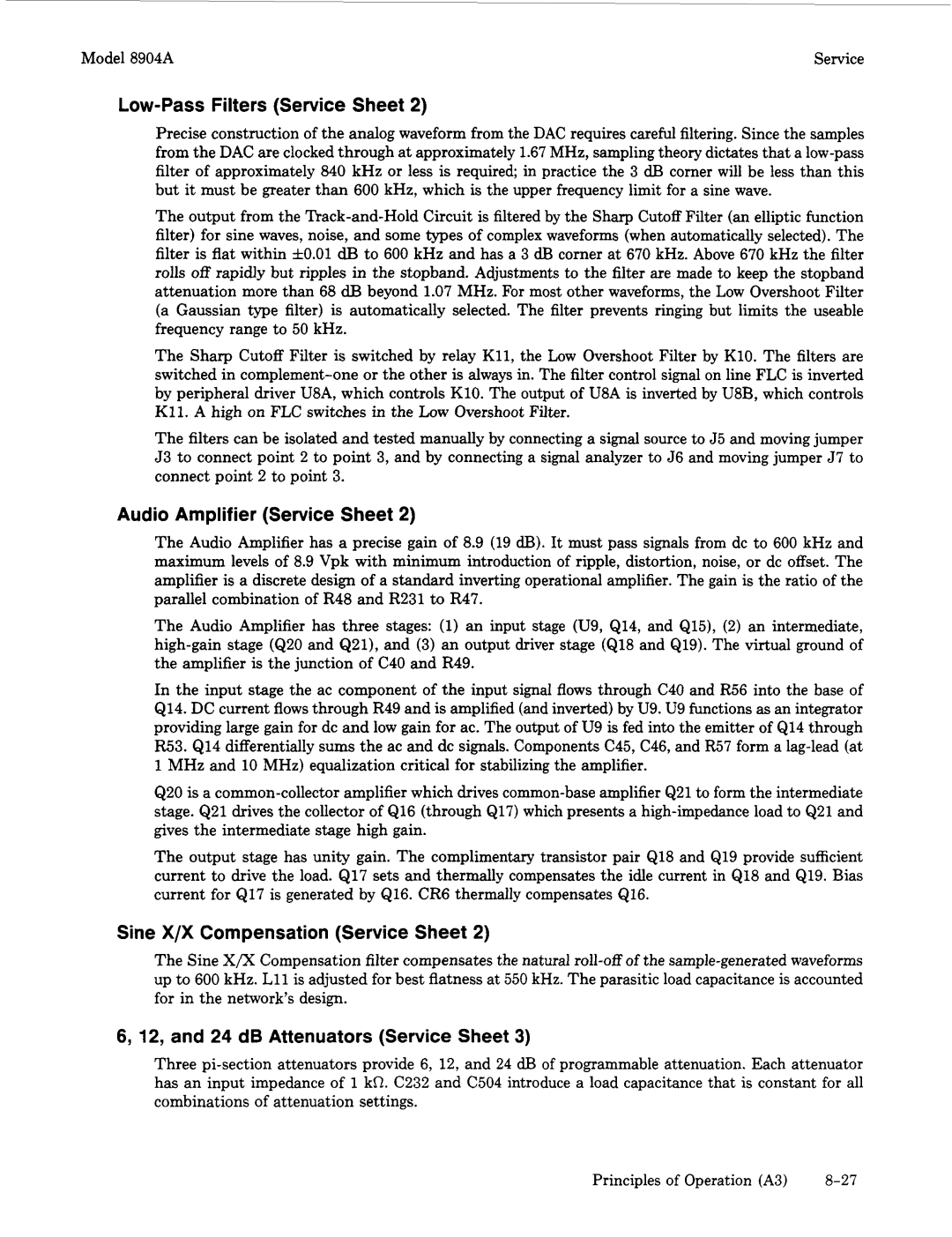
Model 8904A | Service |
Low-Pass Filters (Service Sheet 2)
Precise construction of the analog waveform from the DAC requires careful filtering. Since the samples from the DAC are clocked through at approximately 1.67MHz, sampling theory dictates that a
The output from the
The Sharp Cutoff Filter is switched by relay K11, the Low Overshoot Filter by K10. The filters are switched in
The filters can be isolated and tested manually by connecting a signal source to 55 and moving jumper 53 to connect point 2 to point 3, and by connecting a signal analyzer to J6 and moving jumper 57 to connect point 2 to point 3.
Audio Amplifier (Service Sheet 2)
The Audio Amplifier has a precise gain of 8.9 (19 dB).It must pass signals from dc to 600 kHz and maximum levels of 8.9 Vpk with minimum introduction of ripple, distortion, noise, or dc offset. The amplifier is a discrete design of a standard inverting operational amplifier. The gain is the ratio of the parallel combination of R48 and R231 to R47.
The Audio Amplifier has three stages: (1)an input stage (U9, Q14, and QE), (2) an intermediate,
In the input stage the ac component of the input signal flows through C40 and R56 into the base of Q14. DC current flows through R49 and is amplified (and inverted) by U9. U9 functions as an integrator providing large gain for dc and low gain for ac. The output of U9 is fed into the emitter of Q14 through R53. Q14 differentially sums the ac and dc signals. Components C45, C46, and R57 form a
Q20 is a
The output stage has unity gain. The complimentary transistor pair Ql8 and Q19 provide sufficient current to drive the load. Q17 sets and thermally compensates the idle current in Ql8 and Q19. Bias current for Q17 is generated by Q16. CR6 thermally compensates Q16.
Sine X/X Compensation(Service Sheet 2)
The Sine X/X Compensation filter compensates the natural
6, 12, and 24 dB Attenuators (Service Sheet 3)
Three
Principles of Operation (A3)
